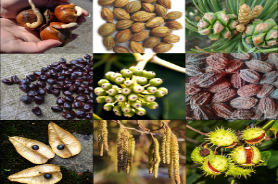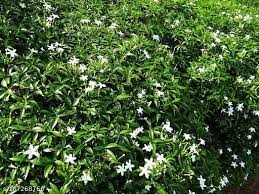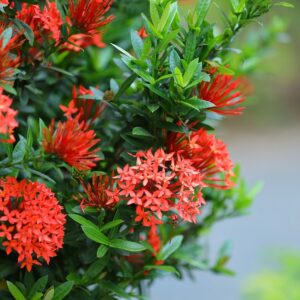Here is some detailed information about Tabernaemontana coronaria nana:
- Description: Tabernaemontana coronaria nana is a compact, evergreen shrub that typically reaches a height of 30 to 60 centimeters (12 to 24 inches) and has a similar spread. It has a bushy growth habit with dense foliage. The leaves are leathery, glossy, and arranged opposite each other along the stems. They are oblong to elliptical in shape and about 5 to 10 centimeters (2 to 4 inches) long. The leaves are dark green and have prominent veins.
- Flowers: This dwarf variety of Tabernaemontana coronaria produces attractive and fragrant flowers. The flowers are star-shaped and have five white petals that are arranged in a pinwheel-like pattern. The blooms have a waxy texture and can measure around 2 to 3 centimeters (0.8 to 1.2 inches) in diameter. They appear in clusters at the ends of the branches and bloom throughout the year, with the peak flowering period in spring and summer.
- Fragrance: One of the notable features of Tabernaemontana coronaria nana is its delightful fragrance. The flowers emit a sweet and intoxicating scent, especially during the evening and night, which attracts pollinators like moths.
- Cultivation: Tabernaemontana coronaria nana is a relatively easy plant to grow and is suitable for both indoor and outdoor cultivation. It prefers a well-drained soil mix and thrives in full to partial sun. It is tolerant of a wide range of temperatures but prefers a warm and humid climate. In colder regions, it can be grown as a container plant that can be brought indoors during winter.
- Uses: The fragrant flowers of Tabernaemontana coronaria nana make it popular as an ornamental plant. It is often planted in gardens and landscapes to add beauty and fragrance. The compact size of the dwarf variety makes it suitable for small gardens, borders, or as a container plant for patios and balconies. The flowers are also used in traditional floral arrangements and garlands.
Note: While Tabernaemontana coronaria nana is a relatively low-maintenance plant, it is worth mentioning that all parts of the Tabernaemontana genus, including this variety, are considered toxic if ingested. Therefore, caution should be exercised when planting it in areas accessible to children or pets.













Reviews
There are no reviews yet.